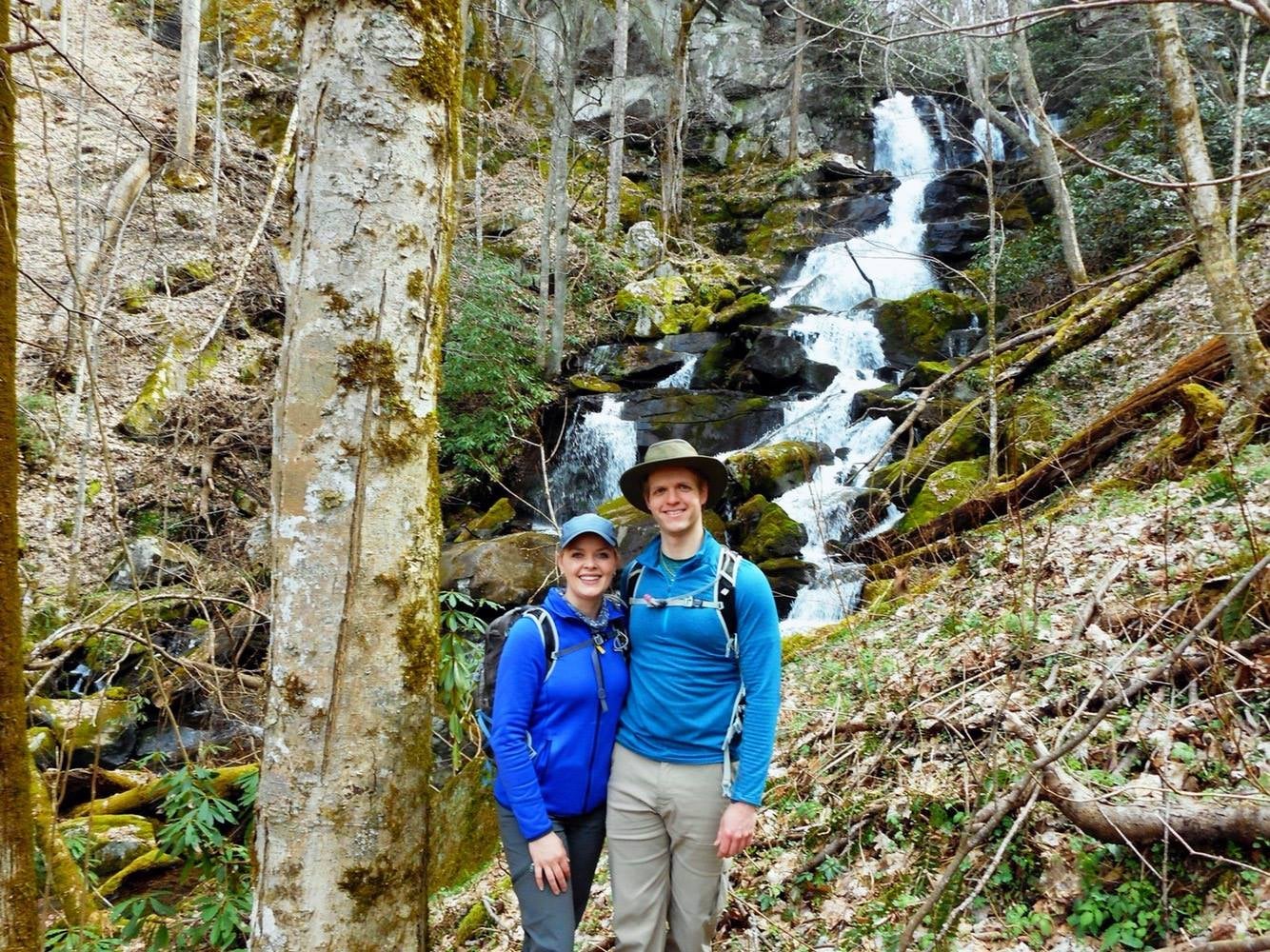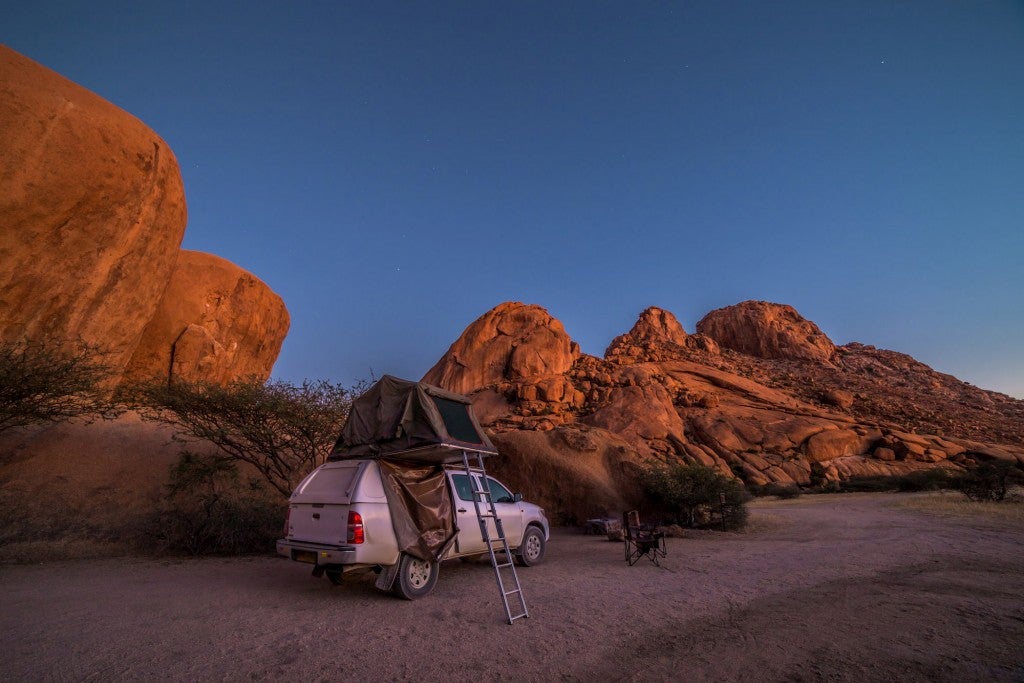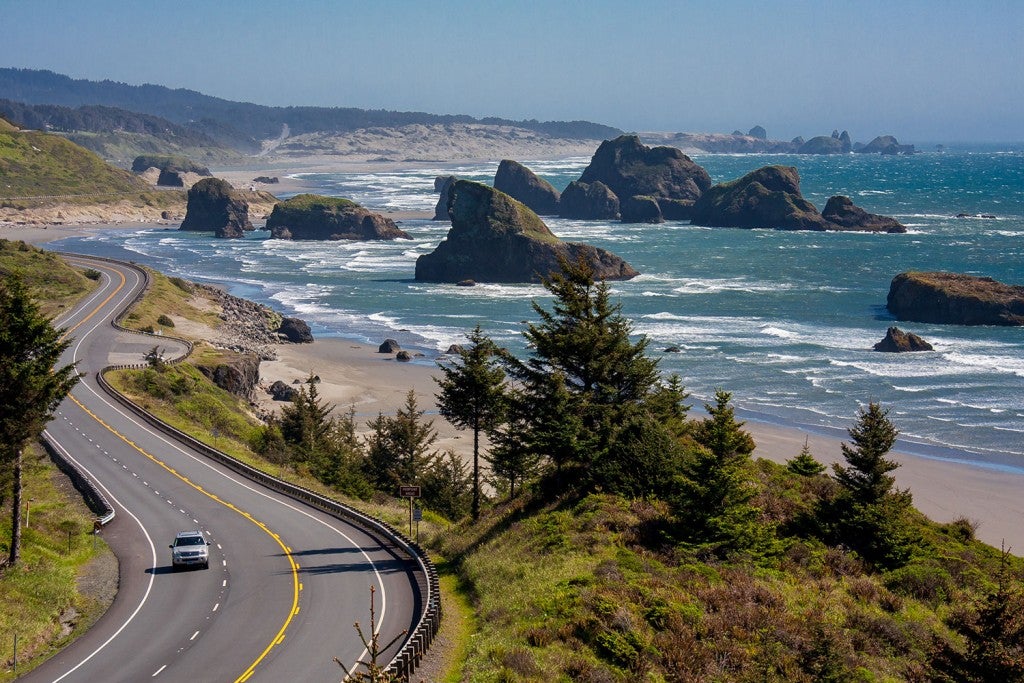This article about Smoky Mountain trails is brought to you by Primus, makers of the classic camping stove that lets you cook delicious meals while you hike the Smoky Mountain trails and beyond.
Sarah Kennedy is an attorney in East Tennessee who loved country life, but didn’t consider herself an outdoor enthusiast. One day, looking for an afternoon’s entertainment, she and her husband Ben went for a hike in the Smokies. The rest, as they say, is history.
The couple are now avid hikers, and Sarah has successfully “mapped” Great Smoky Mountains National Park. That means she’s hiked every single one of the Smoky Mountain trails shown on the standard map of the park—sometimes more than once.
We caught up with Sarah Kennedy to learn more about her favorite national park, what it’s like to hike all the Smoky Mountain trails, and what she’s learned along the way. Be warned: you might be inspired to pay a visit to Great Smoky Mountains National Park, whether to see the famous synchronous firefly displays in the spring, forage for herbs, summit a major peak, or even to all the Smoky Mountain trails yourself.
How Sarah Kennedy Went from Casual Hiker to Hitting Every One of the Smoky Mountain Trails
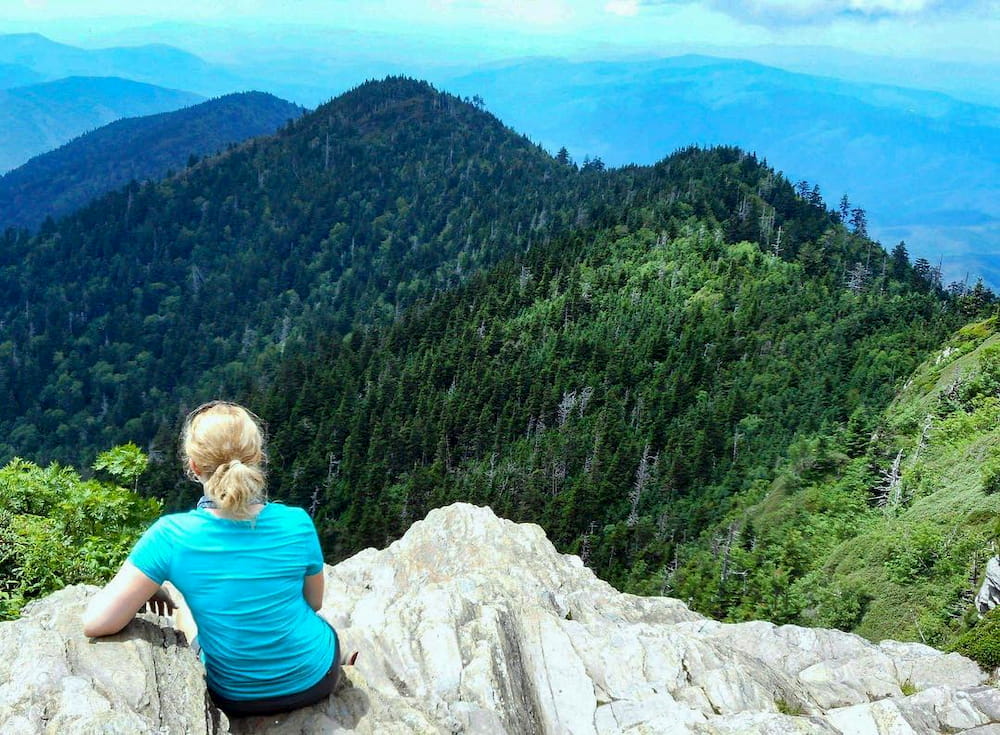
Photo from Sarah Kennedy’s Instagram
The Dyrt: How did you first become enamored with the Smoky Mountains?
Sarah Kennedy: After I settled into my profession, I realized that for the first time in years, my weekends did not have to be filled with studying. So, my husband and I began doing random things like spelunking and visiting the aquarium. One weekend, we decided to go on a hike in the Smokies. After doing some research, we settled on a hike to Charlies Bunion, one of the Smokies’ classic hikes. After only about a half a mile on the trail, I felt something click into place and I felt at home. I found a piece of me that I didn’t know was missing.
When we reached our destination, I’ll never forget the awe and peace I felt in that moment. I sat in wonder, eating the lunch we’d brought, and I knew with every fiber of my being that my life had somehow changed during the trailhead to the destination. I was at home in the Smokies.
Where did you get the idea to map the whole park?
Once my we began hiking, I ran across a Facebook group dedicated to hiking in the Smokies. It was through that group that I realized that becoming a “900-miler” (hiking all the trails in the park) was a thing. And since I like to challenge myself and loved the park, I knew this was something I wanted to do.
Can you tell us more about the practice of mapping?
To become a 900-miler, you must “hike ‘em all”, which means hiking all the Smoky Mountain trails on the $1 hiking map published by the National Park Service. There is an official group you can become a part of once you complete your map. You must fill out an application, pay a small fee, and provide a copy of a map showing when you hiked each of the trails in the park. This is all done via the honor system.
The 900 Miler Club officially began in 1995, and about 600 people have completed a map. However, there are several people that hike all the trails in the park, but do not submit an application for membership into the 900-miler club. And, for some people, completing a map becomes a bit of an addiction. Many go on to complete multiple maps—I’m working on my second.
How did you know you were ready to take on all the Smoky Mountain trails? Is it something you train for like a thru-hike?
Although I wanted to complete a map, I really didn’t know for certain that meeting that goal would become a reality. However, once my husband and I went on a 22.5 mile out and back along the Appalachian Trail from Newfound Gap to Eagle Rocks, I knew I could make completing my map a reality just day hiking the trails.
I developed friendships with other hikers through social media, and began hiking with a friend on a regular basis. He was working on his third map of the park, and wanted to help me complete my first map. Because we were both day hikers, we devised long and creative shuttle hikes that allowed us to quickly mark off trails. This also allowed him to complete a map more quickly than he had ever done. From that point forward, I either hiked with him, my husband Ben, or both to complete my map. I couldn’t have done it without them.
Whether you backpack or day hike, it is an enormous undertaking to hike all of the trails in the park. Not only is it hard work physically, but the logistics are extremely challenging. Car drops, long car shuttles and even boat shuttles are all part of completing a map in the Smokies. Because the hiking community of the Smokies is so supportive, you always have someone willing to help you out with a car shuttle or willing to take on a difficult hike with you to help you finish your map.
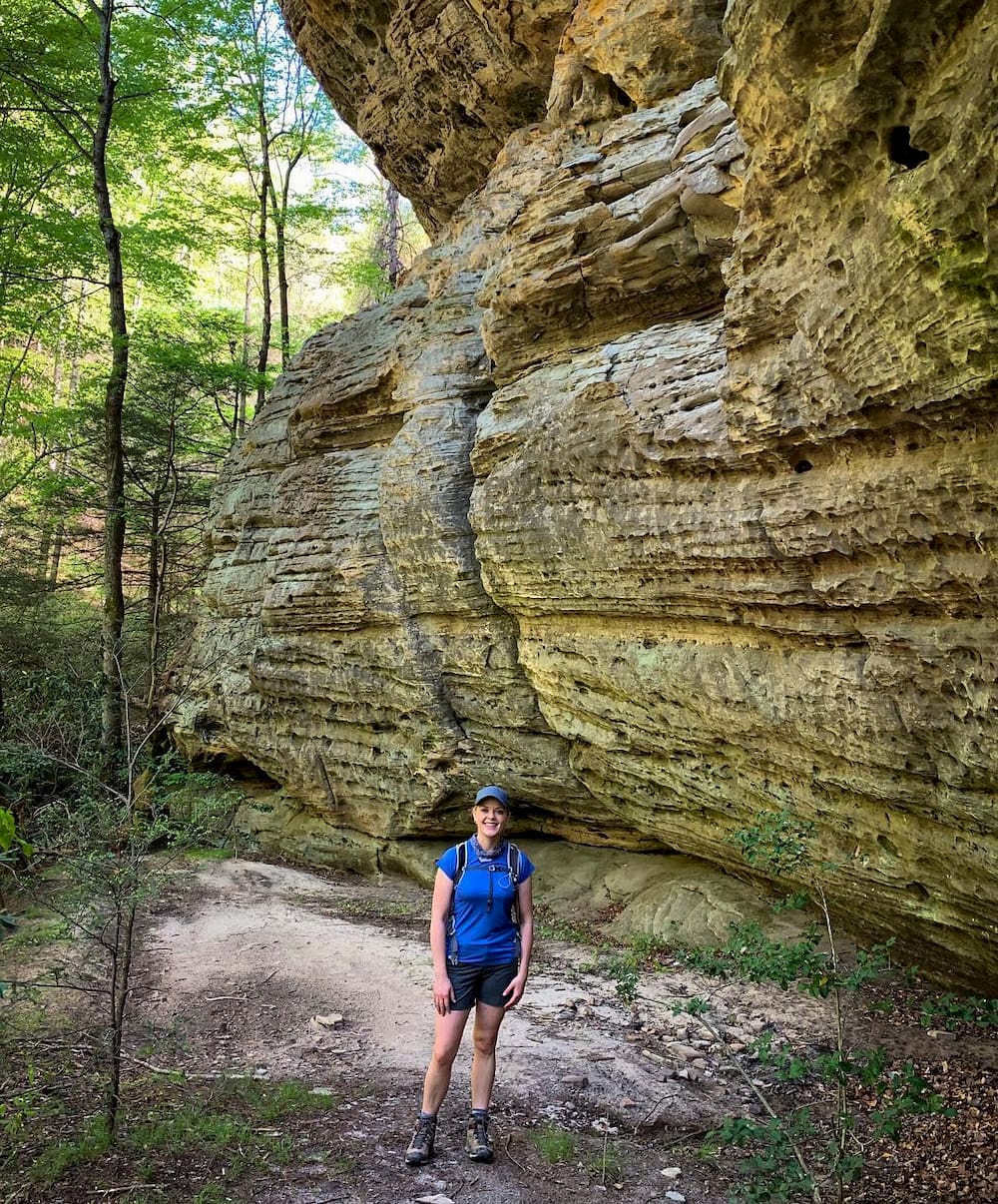
Photo from Sarah Kennedy’s Instagram
So you’ve also traveled around the world and hiked many other places outside the park. What sets the Smokies apart, and how do they compare to, say, wilder places like Denali or really different landscapes like the Grand Canyon?
So often, the Smokies get overlooked or overshadowed by other places around the world. However, in my experience, for any trail that I’ve hiked in any other part of the world—at any difficulty level—I’m able to compare it to one of the Smoky Mountain trails, whether in steepness, rockiness, or difficulty of water crossings. Additionally, the Smokies’ trail system is such that you can create endless loops of hikes with varying terrain and difficulty. The Smokies are rugged and demanding, and they will prepare you for hiking almost any other trail in the world.
The Smokies’ trail system is so extensive that it is easy to develop loops or interesting shuttle hikes. Honestly, I think the ability to put together these hikes develops as you gain knowledge of the different areas of the Smokies, as well as experience hiking longer distances. You simply have to know your own capabilities as far as elevation and distance.
What are some of your favorite trails in the park?
I have MANY favorite trails. Hazel Creek Trail is a beloved favorite of mine because it is remote, full of history, peaceful, and filled with numerous water crossings—and I finished my map on a section of it. This hike begins with a boat shuttle across Fontana Lake to my favorite area of the park, Hazel Creek.
Over the next 23 miles, you hike in some of the most remote and rugged areas of the park, which means you likely won’t see anyone else on the trail (and “trail” is a term I use loosely—at one point, you are practically hiking through a creek for about 2.5 miles).
You will find no better display of spring wildflowers than in this area of the park, with trillium and wild geraniums as far as the eye can see. Towards the middle, you visit an old fire tower site at a place known as High Rocks. All that is left now is the chair that remained in the tower. It’s a rite of passage to have a picture taken in that chair.
The Road Prong Trail is seldom hiked nowadays, but used to be very popular in the 1970s and 1980s; it follows the old Oconaluftee Turnpike, which was a toll road through the Smokies in the 1800s. I also love Camel Gap Trail on the North Carolina side, which follows Big Creek for several miles.
I always enjoy hiking along the Appalachian Trail, particularly on the eastern side due to the outstanding vistas. It’s hard to pick a favorite. I probably have 20-25 favorites, many of which are lesser known or talked about when people discuss Smoky Mountain trails.
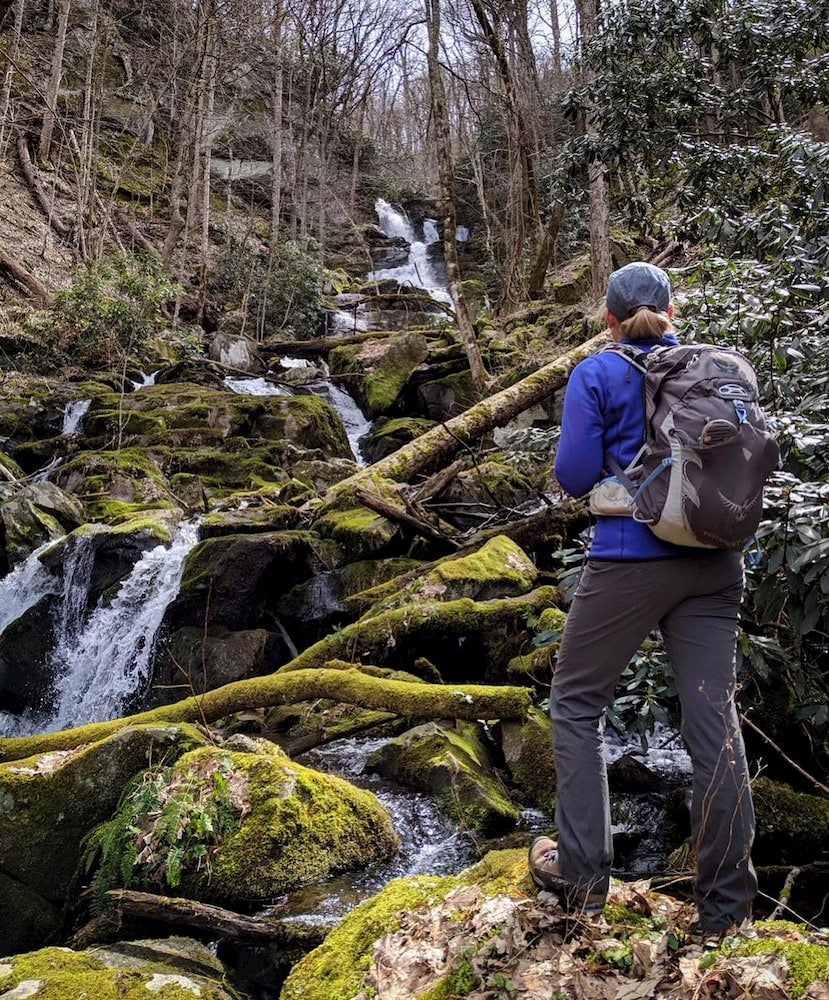
Photo from Sarah Kennedy’s Instagram
Do you have any trail-specific advice for some of the more popular or challenging Smoky Mountain trails?
This advice applies to any trail in the park or elsewhere: know your limits and be prepared! I think of hiking like any other sport of skill; to be good at it, you have to practice it. This means that the more you do it, the better you become, ready to take on more elevation and longer distances.
The ability to do the hard hikes doesn’t simply happen overnight, it takes time and endurance. Any time you are on a trail, it is important to carry the essentials, no matter how short or easy the hike may be. If you’re going into the backcountry, I also advise carrying a water filter, extra layers of clothing, an emergency bivvy, and at least an extra day’s worth of food, even if you only plan to be out for the day. Always, always carry a compass and map—and know how to use them!
If someone wanted to get started exploring the Smokies, or on their own mapping project, where would you suggest they begin?
I would begin with small steps. Download the trail map, research popular hikes, and attempt a few. If you enjoy them, then I would suggest stopping by the visitor’s center to purchase a copy of Hiking Trails of the Smokies, (better known as the “little brown book”) which has detailed trail descriptions and elevation for each trail. Try to find some hiking friends or join hiking groups and start marking off trails! I would also suggest visiting the 900 Miler Club’s website.
You have a pretty demanding career as a lawyer, in addition to being an involved community member, wife, and dog mom. How do you balance all those roles and your dedication to hiking? Do you have any advice for other women hoping to carve out more time for the outdoors?
This is such a good question. Earlier I mentioned that when I began hiking, I found a piece of myself that I didn’t know was missing. Hiking not only gives me a deeper sense of self, but it has helped me balance the various roles of my life. I have a much lower stress level and am able to problem-solve more effectively after spending time pounding trail, which makes me a better lawyer for my clients and a more laid-back person to be around.
But even beyond that, the joy I derive from hiking has helped me put into perspective what matters for a life well-lived. For me, that’s balancing my time and energy across the things I care most about: my husband, my family and friends, my career, and the outdoors.
For other women looking to carve more time for themselves outdoors, I think you have to be brave enough to limit obligations in other aspects of your life to spend more time outdoors. To people who don’t “get it”, it’s hard to explain that your time outdoors makes you a more effective wife, mom, lawyer, or community member. Life is short, so it’s better to live a life that gives you purpose, not pleasing others by committing to obligations that don’t provide the same kind of fulfillment.
This article was brought to you by Primus

Pick up one of their durable camping stoves today!
Related articles:
- Cane Creek Park, NC
Related Campgrounds:
- Greenbrier Campground
- Anchor Down RV Resort, Dandridge, TN
- Clabough’s Campground, Pigeon Forge, TN
- Cosby TN Campgrounds, Great Smoky Mountains National Park, TN
- Roan Mountain Camping, Carter County, TN
- Deep Creek Campground, Great Smoky Mountains National Park, NC
Popular Articles:
Articles on The Dyrt Magazine may contain links to affiliate websites. The Dyrt receives an affiliate commission for any purchases made by using such links at no additional cost to you the consumer.

